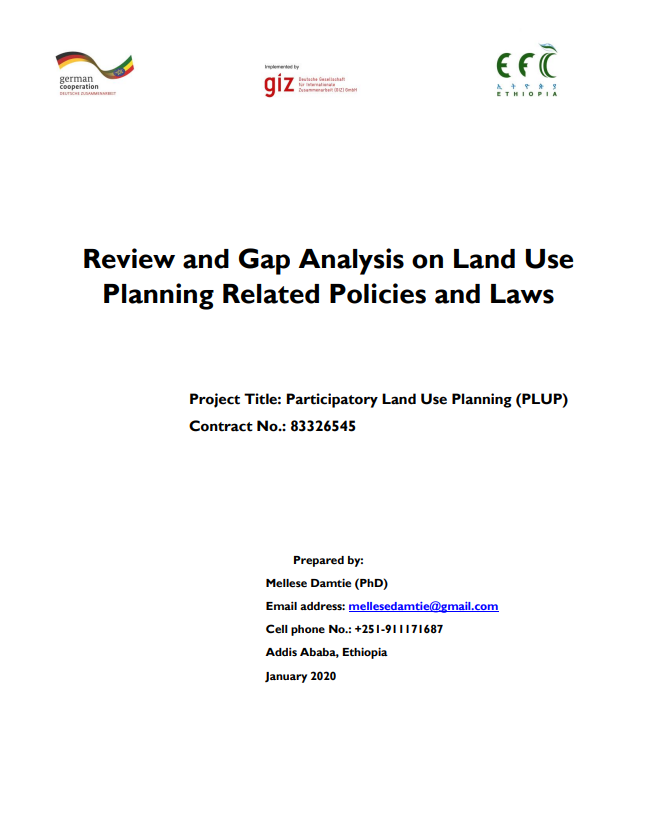Resource information
Currently in Ethiopia land use planning is an issue of emergency. The factors which make land use planning imperative include: high population increment; allocation of vast tracts of land for agricultural and other investment initiatives; high level of youth joblessness; unplanned urbanization and uncontrolled squatter settlement in large and small urban centers; and expansion of farmlands into forests, wetlands, steep slopes and other environmentally sensitive areas. If Ethiopia embarks on land use planning in a short period of time, it is possible to satisfy all the necessary demands for land in a sustainable manner. This, however, requires making difficult choices and trade-offs. The costs and consequences of inaction regarding land use planning will be too big and hence it is high time for Ethiopia to quickly work on land use planning. However, preparation of good land use planning by itself does not solve the problem. It needs to be accompanied by a strong lead institution that can effectively embark on planning activities by engaging and coordinating all stakeholders for its preparation and implementation. This study is conducted to review rural and urban land use and land administration legislations with the view to analyzing the gaps on the existing laws, regulations, directives, guidelines, and standards both at federal and regional levels and come up with recommendations which would serve as an input for the draft land use policy and subsequent land use legislation. Section 2 of the study highlights data collection methods while Section 3 and 4 deal with review of federal and regional policy and legal instruments respectively. Section 5 is devoted for the discussion of major findings and gap analysis from review of policies and laws and interviews and focus group discussions. Finally, Section 6 gives conclusions and recommendations.

